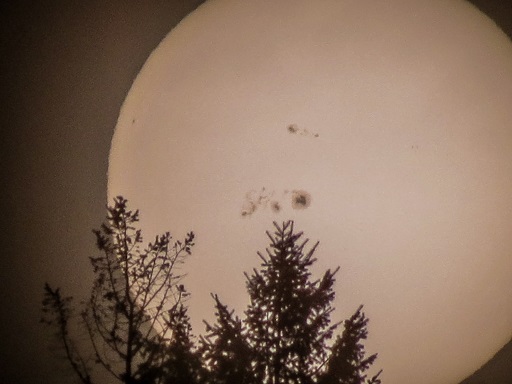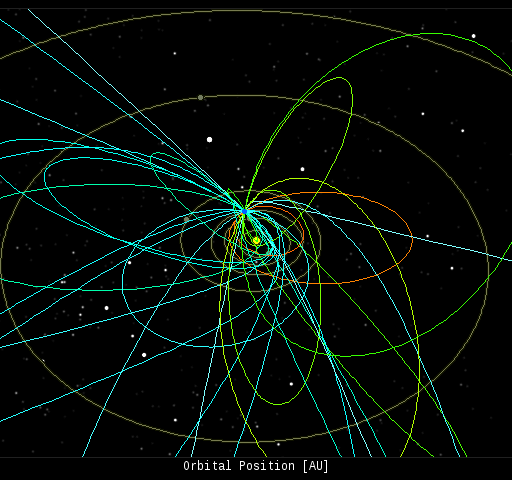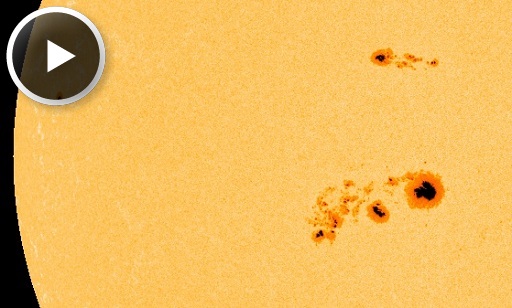Major X1.2 Solar Flare and Earth Facing CME Detected from Sunspot region AR9144
A major solar flare measuring X1.2 was detected on Tuesday afternoon peaking at 18:30 UTC . The source of the eruption was region 1943, with interaction between sunspot 1944. Because the flare appears to be long in duration, a coronal mass ejection is possible. The blast site is in a great geoeffective position for Earth directed eruptions. Attached image by the Solar Dyanamics Observatory (SDO) via solarham.net |
| X-FLARE: Giant sunspot AR1944 erupted on Jan 7th at approximately 1832 UT, producing a powerful X1-class solar flare. First-look coronagraph images from the STEREO-Ahead spacecraft appear to show a coronal mass ejection (CME) emerging from the blast site. If so, the CME is almost certainly heading for Earth. Stay tuned for updates as more data arrive from the NASA-ESA Heliophysics Fleet. |
HUGE SUNSPOT TARGETS EARTH: One of the biggest sunspots in years is crossing the center of the solar disk, putting Earth in the
way of potential eruptions. Rocky Raybell photographed the active region named "AR1944" yesterday from his backyard in Keller, Washington:
way of potential eruptions. Rocky Raybell photographed the active region named "AR1944" yesterday from his backyard in Keller, Washington:
 |
| The sprawling sunspot contains dozens of dark cores, the largest big enough to swallow Earth three times over. This makes it an easy target for amateur solar telescopes -- or even regular cameras. Raybell used an SX40 digital camera on a tripod whole holding a Baader solar filer over the lens to capture his image. Photo details may be found here. |
Although AR1944 has been mostly quiet for days, flares are in the offing. The sunspot has an unstable 'beta-gamma-delta' magnetic field that could erupt at any time. NOAA forecasters estimate a 75% chance of M-class flares and a 30% chance of X-flares on Jan. 7th.
CME IMPACT: A coronal mass ejection (CME) hit Earth's magnetic field on Jan. 7th at approximately 1500 UT. The glancing impact did not immediately spark a geomagnetic storm. However, storm conditions could develop as Earth travels through the CME's wake. High latitude sky watchers should remain alert for auroras. Aurora alerts: text, voice.
| Shown above is the latest forecast of conditions in the solar wind, as predicted by the WSA-Enlil model. The solar wind is a fast-moving stream of charged particles emanating from the Sun and moving outwards towards the Earth and planets. During “fair-weather” conditions the solar wind still contains significant variations in density and speed which originate at the solar surface and are imparted with a spiral appearance due to the Sun's roughly 27 day rotation. At irregular intervals the “fair-weather” is interrupted by major solar eruptions known as Coronal Mass Ejections (CMEs) which are propelled outwards into the background wind. Variations in the plasma density and speed within these solar storms can be much more dramatic than during quiet conditions. For both “fair-weather” and “storm” conditions, predicting the arrival at Earth of variations in the solar wind is important because these can lead to geomagnetic storms. |
All Sky Fireball Network |
On Jan. 7, 2014, the network reported 30 fireballs.
(29 sporadics, 1 Quadrantid)
(29 sporadics, 1 Quadrantid)
 |
In this diagram of the inner solar system, all of the fireball orbits intersect at a single point--Earth. The orbits are color-coded by velocity, from slow (red) to fast (blue). [Larger image] [movies]
On Jan. 6, 2014, the network reported 7 fireballs. |
(6 sporadics, 1 alpha Hydrid)
 |
| In this diagram of the inner solar system, all of the fireball orbits intersect at a single point--Earth. The orbits are color-coded by velocity, from slow (red) to fast (blue). [Larger image] [movies] |
Near Earth Asteroids |
On January 8, 2014 there were 1449 potentially hazardous asteroids.
Recent & Upcoming Earth-asteroid encounters:
| Asteroid |
Date(UT)
|
Miss Distance
|
Size
|
| 2013 YL2 |
Jan 3
|
3.6 LD
|
101 m
|
| 2014 AF16 |
Jan 5
|
6.2 LD
|
41 m
|
| 2013 YM48 |
Jan 6
|
8.8 LD
|
31 m
|
| 2013 YV102 |
Jan 7
|
6.7 LD
|
34 m
|
| 2014 AD16 |
Jan 8
|
1.5 LD
|
15 m
|
| 2014 AE29 |
Jan 9
|
4.1 LD
|
16 m
|
| 2007 SJ |
Jan 21
|
18.9 LD
|
1.9 km
|
| 2012 BX34 |
Jan 28
|
9.6 LD
|
13 m
|
| 2006 DP14 |
Feb 10
|
6.2 LD
|
730 m
|
| 2000 EM26 |
Feb 18
|
8.8 LD
|
195 m
|
| 2000 EE14 |
Mar 6
|
64.6 LD
|
1.8 km
|
SpaceWeather.com -- News and information about meteor showers, solar flares, auroras, and near-Earth asteroids
Madtown Preppers Alerts are for informational use only. These alerts purpose is to inform you of news events in order for you to adjust your family preparedness programs. We believe that knowledge is power and in order for you to make informed decisions, we try and bring you verified information, not to increase fear but to inform you. We do not endorse any of the sources we link to in any article.
.JPG) |
NebShip Shop Survival/Bushcraft/Off Grid Living |

Fire/Cooking/Bushcraft (4) 
Off Grid COM/Power (6) 
Knives/Blades/Custom Edged Tools (4) 
Water/Storage/Safety


No comments:
Post a Comment